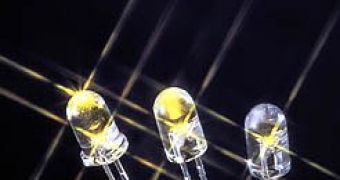Light emitting diodes are taking over our lives, whether you like it or not. They can be found almost everywhere starting with your average mobile cellular phone, to indoor lighting solution, lasers and even liquid crystal displays and televisions. However, although being extremely energy efficient, small and resilient enough to be incorporated into a wide range of applications, scientists are still not satisfied and argue they can do better.
As doctoral student in electrical, computer and systems engineering, Martin Schubert, for example, was able to design a new type of light emitting diode, called a polarized LED, the first of its kind. For his feat of engineering, Schubert received the Lemelson-Rensselaer Student Prize, worth of 30,000 US dollars. Due to its innovative design, the new LED could be used successfully to enhance the efficiency of LCD screens and to improve the energy consumption in the hope that the future will bring us a ultra-efficient LED design.
The polarized LED created by Schubert uses current advanced LED manufacturing technologies to optimize the control of the direction of light emission and light polarization during the emission phase, meaning a better control over light, in order to reduce the loss of energy through light scattering in random directions. This makes it ideal for LCD applications, giving the display the capability of recreating images in more life-like colors without the danger of the appearance of possible artifacts.
Curiously enough, traditional LEDs are already capable of emitting polarized light and the story ends here, because they are not able to take advantage of this special feature. With the polarized LED, Schubert observed the potential of traditional LEDs and optimized it by creating an optical setup which further enhanced the polarization of the light emitted by the semiconductor chip. The new design has the power to be quickly incorporated into future LCD and television displays and to replace the relatively low efficiency fluorescent tubes, which also have the disadvantage of being filled with poisonous mercury vapor.

 14 DAY TRIAL //
14 DAY TRIAL //